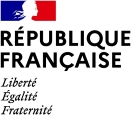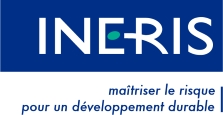Frequently asked questions
BPS is present in some materials as a monomer, i.e. part of the polymer chain.
The main materials concerned are:
• BPS-based epoxy resins: coatings in the field of food packaging (tins, drinks cans, etc), automotive and marine industry;
paints;
laminated printed circuits (flexible);
encapsulated semiconductors and structural composites;
lithographic inks and light-sensitive resins for the electronic industry (this both applications are growing).
• Polycarbonate (*): dishes for canteen kitchens; milk bottles; chocolate molds; water containers; safety glazing; laboratory instruments; medical instruments; housings for household appliances; electrical boxes; broadcasters lighting lamps; CD / DVD, etc.
• Polyethersulfone (*): food industry; hot water systems; dishes for children and baby bottles; electricity and electronics (coils, brush holder, printed and integrated circuits, connectors, fuel cells); automotive industry (parts of carburetors, bearing cages); textiles, lighting, optics, medical devices; aviation, aerospace.
More discreetly, other materials are also concerned:
• Polyester resins based on BPS as co-monomer: electricity and electronics, automotive industry, packaging.
• Phenolic resins based on BPS as co-monomer: electricity and electronics, automotive industry, household appliances, aerospace and aviation, and packaging.
On the other hand, BPS can specifically be used as additive for others applications:
• As additive for the coating of thermal papers (receipts of cash dispensers and receipts);
• As modifier for leather, fibers, polymers and as hardener for epoxy resins.
Although no studies have been conducted to date to confirm this hypothesis, BPS could also be present in textile articles.
(*) This material may be produced from others bisphenols than bisphenol S, current uses of this material may nevertheless indicate a potential presence of BPS.
The main materials concerned are:
- BPF-based epoxy resins: coatings in the field of food packaging (tins, drinks cans, etc), automotive and marine industry;
paints;
laminated printed circuits (flexible);
encapsulated semiconductors and structural composites;
lithographic inks and light-sensitive resins for the electronic industry (this both applications are growing).
- BPF-based benzoxazine resins: interior plastics of aircrafts, adhesives for the aerospace industry.
BPA is present in some plastics as a monomer, i.e. part of the polymer chain.
The main materials concerned are:
- Polycarbonate: kitchen utensils, childcare items, etc.
- BPA-based epoxy resins: food tins, drinks cans, etc.
Other materials that rarely or never come into contact with food are also concerned:
- Other plastics:
- Polyester carbonate: microwave doors, etc.;
- Polyetherimide: hot drinks machine pumps;
- Polysulfone: filtration membranes for drinking water;
- Polyarylate: water treatment (conduits, pumps);
- etc.
- Other resins:
- Vinylester resins: shipbuilding, flooring, etc.;
- Phenolic resins: coatings for the construction industry, the transport industry, etc.;
- etc.)
BPA can also be used as an additive in several plastics and resins:
- As a hardening agent in epoxy resins and other resins;
- As a polyamide stabiliser in electro-technical applications;
- As an antioxidant in the rubber used to make tyres, etc.
European Directive 2002/72/EC sets the specific migration limit (SML) for formaldehyde and hexamethylenetetramine at 15 mg/kg (total migration value for both substances) in plastic food-contact materials.
Melamine and polyamide kitchen utensils from China and Hong Kong may contain too high a level of formaldehyde and primary aromatic amines in relation to the limits set in the legislation. Indeed, during checks on manufacturers in China and Hong Kong, the European Commission's Food and Veterinary Office detected serious deficiencies in the compliance of such items with the European regulations.
This is why a new regulation (Regulation (EU) No 284/2011), adopted on 22 March 2011 and entering into force in July 2011, urged importers to be more vigilant and reminded them of the fact that the SML for formaldehyde and primary aromatic amines is 15 mg/kg.
This regulation requires importers to report the arrival of any melamine and polyamide kitchen utensils from Hong Kong and China so that inspections can be better organised. Importers must be able to prove that the items comply with the regulations by providing test results. These inspections are subject to a specific procedure.
It seems to be difficult to procure canisters made from an alternative material, as there are still development problems at present (concerning the materials' resistance to repeated washing of the canisters, etc.). However, other types of machine exist that distribute chilled, filtered water without using canisters. They can be connected to the public drinking water supply.
In principle, sealable food trays should not contain BPA. They are made from PS (polystyrene), PVC (polyvinyl chloride), PET (polyethylene terephthalate) or PP (polypropylene). The films are often made from LDPE (low-density polyethylene) or PVC. However, BPA may sometimes be used in PVC as a stabiliser. As a rule, we would advise you to contact your supplier to check.
In France, a law dating from 30 June 2010 suspended the manufacture, import, export and sale of infant feeding bottles made from products containing Bisphenol A. On 1 April 2011, this suspension was replaced by a European Regulation (Regulation (EU) No 321/2011), which restricts the ban on BPA to the manufacture of infant feeding bottles designed for children under the age of 1 only. This restriction has also applied to the sale and import of such products since 1 June 2011.
Since June 2010, the manufacture and importation of infant feeding bottles made from BPA has been banned in Europe (Regulation (EU) No 321/2011).
In France, the national parliament has passed Law n°2012-1442 of 24 December 2012, banning the use of Bisphenol A (BPA) in food containers: from 2013 for food products aimed at children under three years of age, and from the start of 2015 for those aimed at the rest of the population.
This timeframe should allow industry players to develop alternatives and prepare to replace BPA. The law also provides for an obligation to warn populations at risk by indicating the presence of BPA on the food containers concerned.
The full text of the law and the documents that led to its adoption can be viewed (in French) here: http://www.assemblee-nationale.fr/14/dossiers/conditionnement_alimentair...
Melamine is sometimes used as an alternative to polycarbonate in children's crockery. Melamine is a polymer made from formaldehyde (formol). Formaldehyde is classed as a CMR category 2 substance under the EU's CLP Regulation.
The legislation (Directive 2002/72/EC) stipulates that food contact materials must have a specific migration limit (SML) for formaldehyde and hexamethylenetetramine of 15 mg/kg (total migration limit for both substances).
Melamine and polyamide kitchen utensils from China and Hong Kong may contain too high a level of formaldehyde and primary aromatic amines in relation to the limits set in the legislation.
A new regulation adopted in March 2011 and entering into force in July 2011 urged importers to be more vigilant and reminded them of the fact that the SML for formaldehyde and primary aromatic amines is 15 mg/kg.
Other substitutes apart from melamine are available, such as polyethylene, polypropylene and polyethersulfone.
Children's crockery items are currently made from polyethylene, polypropylene, polyethersulfone (*) and melamine. Melamine is sometimes considered to pose a potential risk, if the residual monomer levels (and particularly the formol content) are not in line with the legislation or if the item is not used in an appropriate manner (e.g. if it is used in the microwave).
Childcare items such as dummies and teething rings may be made from Tritan® copolyester or polypropylene.
Receptacles for small household appliances may be made from Tritan® copolyester and polyphenylsulfone.
Plates and bowls for ready meals may be made of polypropylene, polystyrene, or a coordination complex based on polypropylene, ethylene copolymers and vinyl alcohol.
(*) The bisphenol S (BPS) can be used as starting monomer for the synthesis of polyethersulfone (PES), since BPS is structurally close to BPA, it is therefore a priori likely to present similar dangers.
Polycarbonate is light, versatile, wear-, heat- and shatter-resistant, transparent and can be made into any shape. It is a thermoplastic material that can be deformed under heat (when the glass transition temperature Tg is reached) and is therefore suitable for the manufacture of items of diverse shapes. The search for an alternative should be guided by the essential properties that it is important to conserve, and the possibility of obtaining authorisation for use in food contact materials. We could seek inspiration in the alternatives already being used, which are listed in the reports published on this site on BPA replacement.
Glass, ceramics and stainless steel are commonly used. If the application in question requires a light and break-resistant product, another thermoplastic polymer could be considered: polypropylene, polyethylene, Tritan® copolyester, polyamide, polyphenylsulfone and SAN (styrene acrylonitrile) are generally used. If the application requires good temperature resistance, care must be taken with regard to the material's glass transition temperature (Tg).
Polyphenylsulfone resists impacts and temperature even better than polycarbonate, but it is amber in colour, and it is therefore impossible to obtain a perfectly transparent item.
Polypropylene is less temperature-resistant than polycarbonate, and has a milky appearance. Microscopic asperities on the surface of the material make polypropylene items less easy to clean than those made from polycarbonate.

